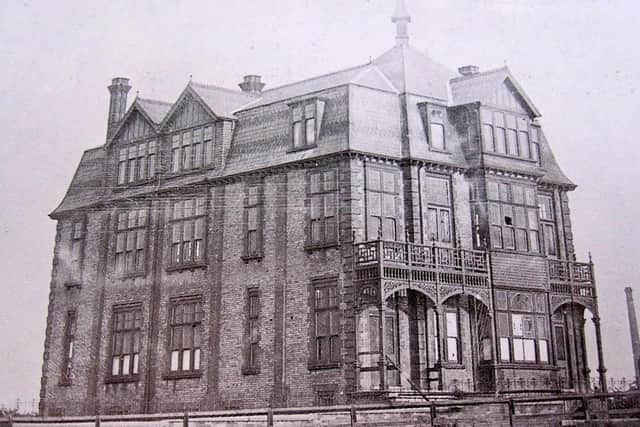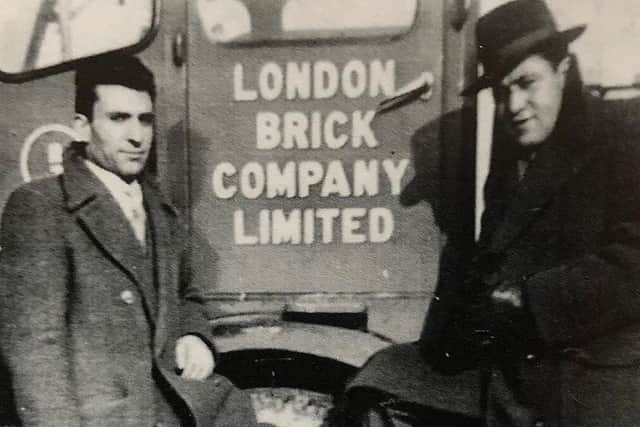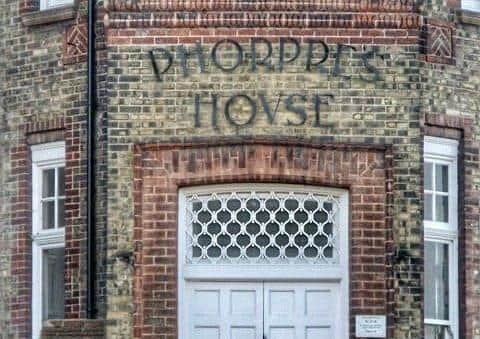The Peterborough company that helped rebuild post-war Britain


This plaque is located on the front of Phorpres House in London Road and is visible from the junction with St Margaret’s Road.
The Fletton Brick industry comes into being
There had been brickmaking in the local area since the late 18th century, if not earlier.


Advertisement
Hide AdAdvertisement
Hide AdManufacturing used wetter, inconsistent, surface clays, usually dug before winter in order to be weathered down.
Brickmaking then took place in the Spring, so it was a slow and seasonal business. In the early 1880s a different method of brick production (the ‘semi-dry’ process) was first adopted for use on a deeper level of clay known as the Lower Oxford Clay.
This clay had special ‘properties’ which made brick-making suitable for mass production on a large scale, and cheaply.
Bricks could be ‘exported’ to London by rail at a cheaper rate than those traditionally made nearer to the capital.


Advertisement
Hide AdAdvertisement
Hide AdEntrepreneurs were needed to exploit this, and the most significant of these was John Cathles Hill, founder of the London Brick Co.
Mixed fortunes of the Coffee Palace/Phorpres House
The site was bought by John Cathles Hill in 1897, and two years later he began to build a Workmen’s Club (nicknamed The Coffee Palace) for his employees, but it was never fitted out.
It remained vacant, but had temporary use as a hostel for police protecting Hill’s non-union employees, then as a mission room for the local Wesleyan congregation, and was followed by use as a Drill Hall for the local Territorial Army unit.


During the First World War it was occupied by J & A Moore Ltd of West Norwood, who manufactured dried vegetables under contract to the Navy.
Advertisement
Hide AdAdvertisement
Hide AdMoore’s bought the building in 1917, and sold it on to Peerless Foods Ltd in 1920 (they manufactured potato crisps there). In the mid-1920s it was used as a hostel once again, this time for the employees of the contractors building the Sugar Beet Factory in Oundle Road.
In 1928 London Brick re-acquired the building as district offices, and a feature article in the Peterborough Advertiser of September 21, 1928 is the source for much of the above. London Brick continued to use it for district offices for about 60 years.
Italians help meet the post-War labour shortage
During the Second World War the London Brick Company closed 20 of its brickworks, leaving only five or six in production. In order to re-open those works and attain full capacity would require – on cessation of hostilities – a two-shift system of 7-8,000 men.
Clearly, with demobilisation slow and the Japanese still to surrender, recruitment was impaired.
Advertisement
Hide AdAdvertisement
Hide AdThe Ministry of Labour proposed (in turn) the use of German POWs, Polish ‘displaced persons’, European voluntary workers, and British chronic unemployed.
The result of employing these was mixed...and insufficient.
In or about 1951 LBC were asked to employ Italians, especially from the areas of highest unemployment (some 4m in Sicily, Sardinia and southern Italy) so from 1951 to 1957 representatives of the company travelled annually to Naples to undertake recruitment. About 3,000 Italian men were brought to the UK.
Full brick production was reached – and exceeded – by 1954/55, so Italian workers played a significant part in this achievement.
- This plaque is one of a series of 15 blue plaques recently installed in central Peterborough by Peterborough Civic Society.
Advertisement
Hide AdAdvertisement
Hide AdThe new series of plaques augments the 20 existing plaques in the city centre.
Further details about all the plaques can be found in the accompanying 28-page booklet which can be ordered on the society’s website for £2 per copy (to cover postage and packing). A download of the booklet is available on the society’s website.
The plaques project has been supported by the National Lottery Heritage Fund and Peterborough City Council.